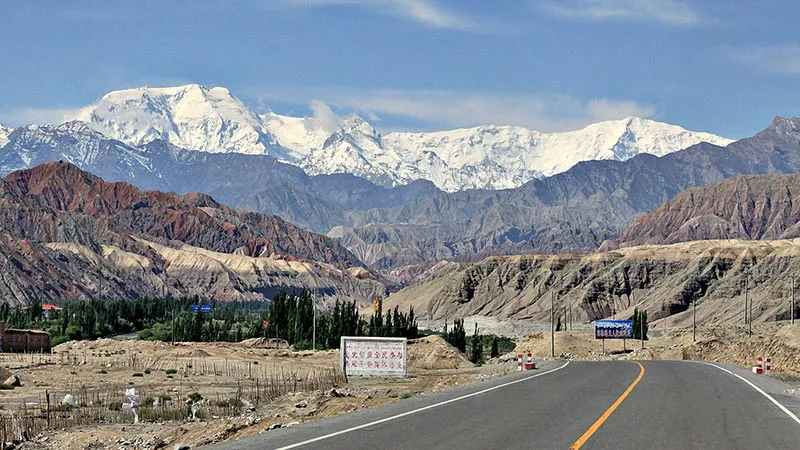Prime Minister Narendra Modi’s reference to Balochistan, POK and Gilgit in his Independence Day speech has caused considerable flutter in Pakistan and India. The reactions were on anticipated lines in Pakistan while reactions in India ranged from the apologetic to the belligerent. Nevertheless, it had taken a Prime Ministerial reference that made Indians to start talking about Balochistan openly. Consistent attempts by Baloch nationalists on the social media to draw attention to their plight did not evoke similar reactions. Certainly the Baloch issue is a humanitarian crisis that needs to be highlighted, but recent commentaries have overlooked the geo-strategic importance of Gilgit Baltistan to China and Pakistan as well as India.
The significance of Gilgit and Baltistan is evident to anyone who looks at the map even cursorily. Without control of Gilgit, Gwadar has no meaning to China. For China, the $46 billion China Pakistan Economic Corridor (CPEC) is a means to increasing its strategic presence in Pakistan and CPEC is part of a grand plan to enhancing influence through rail, road and pipeline connectivity to Central and West Asia while linking Gwadar to Xinjiang through Gilgit. Besides, Xinjiang is only 2500 km from the Arabian coast but is 4500 km from the Pacific coast.
For Pakistan, the significance is that it hopes to get out of the economic distress that it is through this much needed infrastructure activity that CPEC promises. Gwadar, overlooking the Gulf of Oman and as an alternative to the Iranian port of Chahbahar will give strategic advantage to Pakistan. Pakistani dreams have varied from making Gwadar a Dubai of the Arabian Sea or a Singapore on this side of the Malacca Straits, the coast line would be its Riviera and the naval base would take care of India.
The Chinese started taking serious interest in Gwadar in 2001-02 when they saw the Americans entering Central Asia and Afghanistan in their fight against terrorism. The obvious worry was to secure energy supplies and not be dependent on routes that could be subject to interdiction, especially when the Indians and the Americans had decided to co-operate in patrolling the Malacca Straits.
If the TAPI or IPI pipelines were to become a reality, then all this could transform Pakistan into a modern economically sound state. Pakistan would then become a key player as transit point into and from Central Asia, into western China and back with pipelines, rail and road links linked to the Karakoram Highway. This did not happen for a number of reasons, including Islamist violence against Chinese in 2007. There was Baloch opposition to developing as they feared that all benefits would go the Punjab province and the army. The Chinese lost interest temporarily and by 2009 it was apparent the Gwadar port was unviable in the absence of adequate road, rail and port facilities.
Meanwhile, New Delhi slept. The US Congressional Research Service in its report of February 13, 2007 showed a map of the Indian subcontinent with Gilgit and Baltistan as a contiguous part of Pakistan and Aksai Chin as an “Indian claim.” We did not react. During that period Pakistan was busy trying to establish that the ‘Northern Areas of Pakistan’ were not a part of Jammu and Kashmir in August 1947. This was part of a campaign to try and establish that India was in illegal occupation of Siachen. In May 2007, Baroness Emma Nicholson, the EU Rapporteur on Jammu and Kashmir refuted Pakistani claims citing historical evidence from maps of 1909 to Maharaja Hari Singh’s letter to Lord Mountbatten in October 1947 showing Gilgit and Baltistan as part of the Riyasat.
The EU Foreign Affairs Committee report (released May 24, 2007) on Kashmir: Present Situation and Future Prospects was a severe indictment of Pakistani neglect of areas under its control including Gilgit and Baltistan. The document cited considerable evidence that Pakistan had over many years provided Kashmiri militants training, weapons, funding and sanctuary and these militants were never made accountable for these atrocities. Once again, we felt satisfied that the Kashmir aspect was covered, seemingly overlooking the strategic relevance of Gilgit and Baltistan. We took our eye off the ball.
The revival of the Gwadar project in 2015 through the CPEC is also a reflection of Xi Jinping’s ambitions and Chinese assessments that they need to move in rapidly. Today, the CPEC is being supervised as a war project by the Pakistan army and appropriately so, because all the bonanza will come their way through the various corporations that the Army manages. The CPEC will also be routed through Gilgit Baltistan, territory that belongs to India and illegally occupied by Pakistan. In fact, the Shaksgam Agreement between Pakistan and China in 1963, stipulated that “after the settlement of the Kashmir dispute between Pakistan and India the sovereign authority concerned would reopen negotiations with” China. This is an indirect admission that Pakistan did not have irrefutable rights on Gilgit Baltistan.
Chinese assurances that the CPEC is a commercial venture and both India and Pakistan would benefit through mutual trade, is a sleight of hand. Let us not get beguiled into this, knowing that Pakistan is unwilling to trade with us and the CPEC roads do not provide us any trade opportunities into Xinjiang. Clearly, it is a vast geo-strategic project with military overtones of direct interest to both China and Pakistan. It enmeshes Pakistan into the Chinese economy like nothing else will, whether or not the schemes are successful because interest repayments will start at the designated time.
Today we congratulate ourselves about our burgeoning trade with China. In March this year, the Indian Parliament was informed that our trade deficit between India and China was USD 44.7 billion (April 2015 to January 2016). This is representative of the India-China trade pattern and in effect represents a sum of money we are contributing to the Chinese economy every year. It thus costs the Chinese nothing to strengthen Pakistan with the CPEC and the submarines that it is supplying for use against us. All of this indirectly paid for by the Indian economy.
Surely, we need to correct a number of factors in this equation. We begin by asserting our right on Gilgit Baltistan.
This commentary originally appeared in ANI.
The views expressed above belong to the author(s). ORF research and analyses now available on Telegram! Click here to access our curated content — blogs, longforms and interviews.




 PREV
PREV



